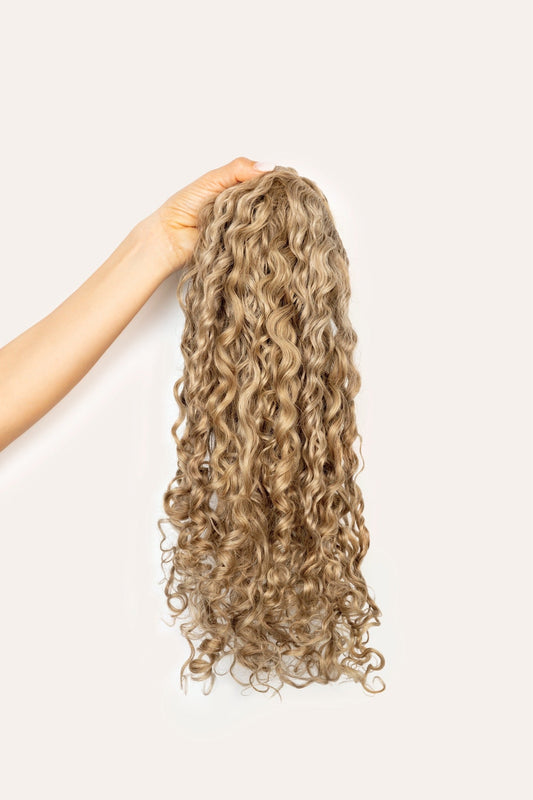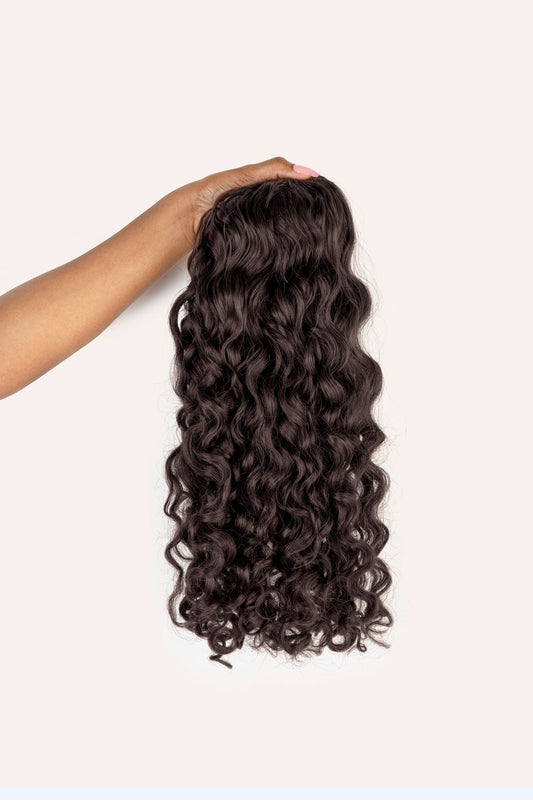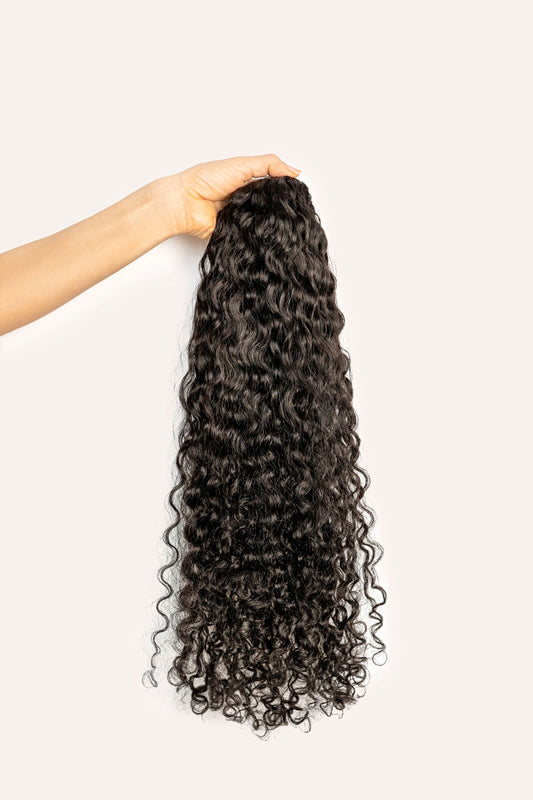You’ve embraced your natural curls. Found a curl regimen that worked. Learned big scientific hair words. Bought a silk scarf, started deep conditioning, the works. But odds are, you may be neglecting one key thing in your routine: Protein.
Yes, if you’re a curly haired human anywhere near the internet, odds are you’ve seen the latest big discussion on everyone’s feed: Moisture vs. Protein. It’s a topic that can feel incredibly stressful, we know!
Fear not, because we’ve got you covered. Today let’s get into protein: What it is, why it matters, and everything in between.

What is protein?
Our hair itself is made of a specific protein called keratin. Just like the rest of the body, hair needs protein to stay healthy, be strong and maintain growth.
Throughout our day to day life though, our hair can lose keratin/protein. This can happen through damage, rough detangling, tough hairstyles, coloring our hair, using excess heat, or even staying in the sun too long. The food we eat won’t replenish our hair’s protein itself, so external protein sources can fill in the gaps that have been created in our hair’s cuticle. This helps to replenish, rejuvenate, and restructure hair, making it less prone to breakage and resulting in a better curl.
Why does it matter?
Maintaining a proper balance between moisture and protein is essential to keep curls both hydrated/shiny and defined. Without protein, hair can become over moisturized, leading to major issues that can even end in dreaded “hygral fatigue.”
If you have color treated, damaged or high porosity hair, protein is going to be extra essential in your journey.
How do I know if my hair needs protein?
If you’re really in the know about your own hair, you often can tell if you need protein just by eye-balling it. Hair in moisture overload can feel frizzy, mushy and lifeless. These strands will appear fluffy, limp, and won’t hold a curl.
However if you’re not sure, a great way to check if your hair needs protein is the stretch test.
Take a clean wet strand of hair, one that hasn’t been stretched already (that you have shed, rather than one you pull out). Gently stretch it between your fingers. Watch carefully for how it reacts, and you’ll be able to see which of the below is the case.
Hair that needs protein: Stretches over 50%, often fully out. This hair has too much moisture, and is too hydrated.
Hair that has a balance of protein and moisture: Stretches a bit (around 30%), then breaks off.
Hair that needs moisture: Snaps immediately when you pull on it without stretching (less than 20%). This hair has too much protein.
How do I incorporate it into my routine?
You’ve done the stretch test, and you’ve determined your hair needs more protein. Well done! A great trick to incorporating protein is finding a strengthening mask that you can incorporate alongside your deep conditioning regimen. Look for products that use words like “strengthening” and “fortifying.” If you’re not looking to go full mask/treatment, you can incorporate protein throughout your stylers by keeping your eye on the ingredient list. When you go to stock up on new products, whether they are masks or stylers, look for any of the following ingredients:
Hydrolyzed __ protein (wheat, oat, soy)
Amino acids (Silk, milk, wheat, etc.)
Peptides
Yeast extract
Hydrolyzed oats or hydrolyzed seeds
Keratin
Collagen
Gelatin
But watch out, because these proteins all come in different sizes and can have different outcomes. After a protein treatment you may find that your hair feels perfect and back to normal, or you may find that it feels tangly or stiff. If this is the case, follow along to our next section!
How many different kinds of protein are there?
Proteins come in different sizes, and that will affect how they react with your hair.
Smallest proteins: Peptides and amino acids are the smallest proteins, and will work best for the widest amount of hair types. These can even work for low porosity hair.
Small proteins: Keratin, collagen, and hydrolyzed silk are some smaller proteins that work for most hair types (fine, medium, and coarse).
Medium/large proteins: Gelatin, a protein that is between medium and large, is best for porous or very damaged hair that is fine to medium.
Large proteins: Quinoa, hydrolyzed wheat, or other plant or vegetable proteins fall on the larger side of proteins, and are best for fine/medium hair that is very porous. This could be hair that is high porosity, or hair that has been damaged or chemically treated. These types of proteins won’t work well for coarse or lower porosity hair.
What if I’m protein sensitive?
Some of us curly humans, specifically those of us with low porosity and fine hair, may need to avoid protein treatments. Because low porosity hair has a harder time absorbing moisture, an overload of protein can leave hair feeling dry and brittle. Fine hair is also more delicate by design, so too much protein can lead to breakage as well.If you’re one of these people you’ll know right away if protein doesn’t work for your hair. About face and on to the next one!
Whew! We know that was a lot of information, but hope that it helps you on your curly journey. Have you had good or bad experiences with proteins? Let us know in the comments!



